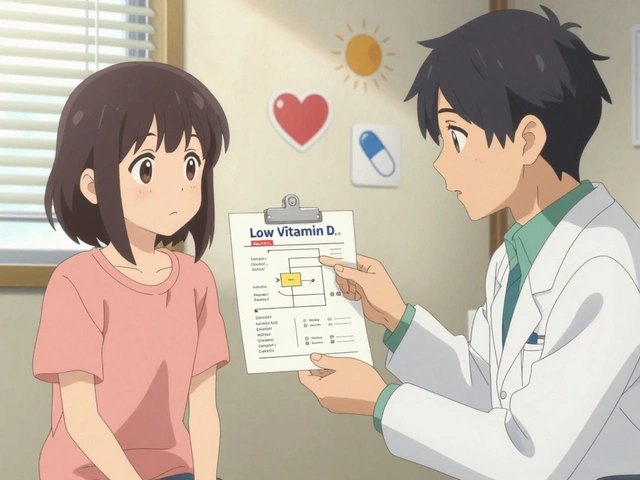Lopinavir/Ritonavir Boosting: How CYP3A4 Interactions Impact Drug Safety and Efficacy
Nov 18 2025
When working with osteoporosis medication, drugs designed to strengthen bones and lower fracture risk in people with osteoporosis. Also known as bone‑strengthening therapy, it targets the underlying loss of bone mass that makes everyday activities risky.
One major class of bisphosphonates, synthetic compounds that attach to bone surfaces and inhibit the cells that break down bone has been the backbone of treatment for decades. Osteoporosis medication also includes newer biologics like denosumab, a monoclonal antibody that blocks a protein responsible for bone resorption. The relationship is clear: bisphosphonates encompass alendronate, while denosumab offers a non‑oral alternative, and together they shape the therapeutic landscape.
Alendronate, a weekly oral bisphosphonate taken with water on an empty stomach is often the first prescription doctors write. It works by slowing the activity of osteoclasts, the cells that eat bone, which leads to a gradual rise in bone mineral density (BMD). Patients usually notice a reduction in spine and hip fracture risk within a year. Proper administration—standing upright for at least 30 minutes after the dose—helps avoid esophageal irritation, a common side effect.
Denosumab, administered as a subcutaneous injection every six months provides a convenient option for anyone who struggles with weekly pills. By neutralizing the RANK‑L protein, it dramatically cuts bone turnover, often producing faster BMD gains than oral bisphosphonates. However, stopping denosumab abruptly can cause a rebound increase in bone loss, so clinicians usually plan a transition to another therapy when treatment ends.
Choosing the right drug isn’t just about chemistry; it requires regular monitoring of bone density. Dual‑energy X‑ray absorptiometry (DXA) scans give a snapshot of your BMD, and serial measurements help doctors decide whether a medication is working or if a switch is needed. Lab tests for calcium, vitamin D, and kidney function also play a role, especially for bisphosphonates that are cleared through the kidneys.
Nutrition and exercise sit alongside medication in a comprehensive plan. Adequate calcium (around 1,200 mg per day for most adults) and vitamin D (800–1,000 IU) create the mineral environment that drugs need to be effective. Weight‑bearing activities—walking, resistance training, even dancing—stimulate bone formation and improve balance, cutting the chance of falls that could trigger a fracture.
Side‑effect profiles differ, so patients should weigh benefits against risks. Bisphosphonates can cause gastrointestinal upset, rare jaw osteonecrosis, or atypical femur fractures after long‑term use. Denosumab may lead to low calcium levels, skin infections, or, again, jaw issues. Discussing personal health history with a provider ensures the chosen therapy aligns with individual risk factors and lifestyle.
Understanding how these pieces fit together—drug class, monitoring, supplements, and activity—empowers you to make informed decisions about bone health. Below you’ll find a curated collection of articles that dive deeper into each medication, compare their pros and cons, and offer practical tips for safe use. Let’s explore the options that can help you keep your skeleton strong and your daily life uninterrupted.
A practical comparison of Didronel (etidronate) with other bone‑health drugs, covering efficacy, dosing, side effects, cost and how to choose the right option.

Nov 18 2025

Dec 15 2025

Dec 5 2025

Nov 16 2025

Dec 3 2025